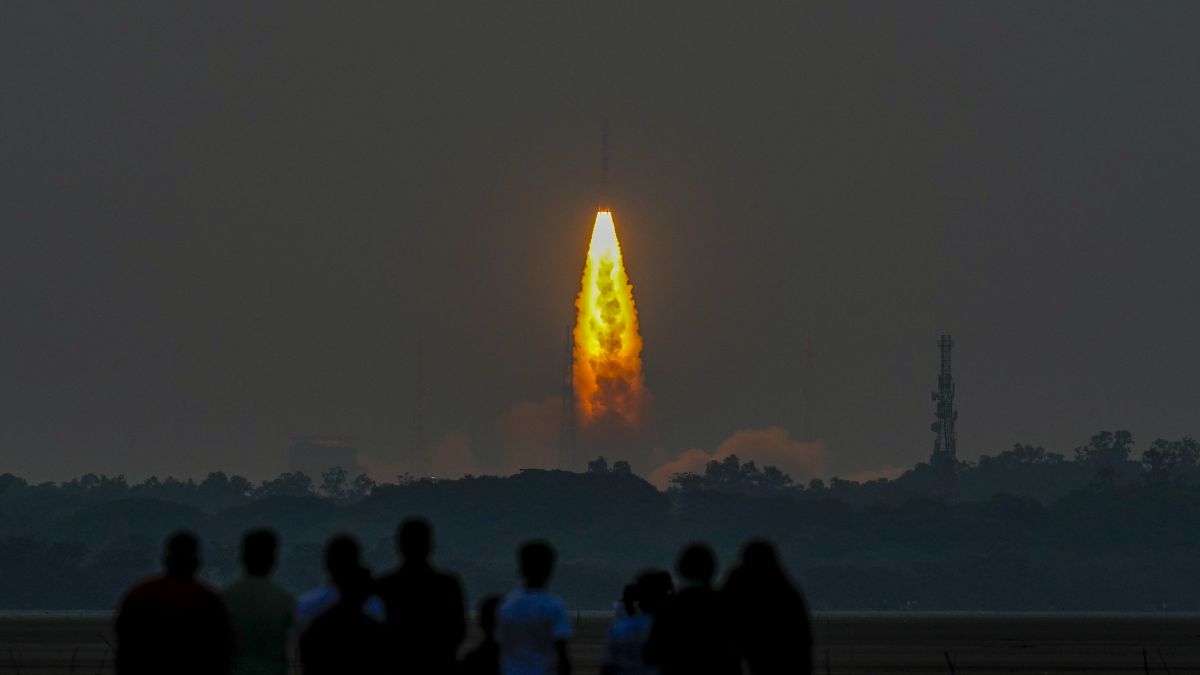EOS-09 mission fizzles: The mystery of ISRO’s rocket failure explained
 PSLV-C61 rocket carrying Earth Observation Satellite (EOS-09) lifts off from Sriharikota on May 18 | PTI
PSLV-C61 rocket carrying Earth Observation Satellite (EOS-09) lifts off from Sriharikota on May 18 | PTI
On May 18, 2025, India’s space agency, ISRO, launched the PSLV-C61 rocket from Sriharikota to place the EOS-09 satellite into orbit. This satellite was meant to take pictures of the Earth for border security and disaster management, even in bad weather. But the mission failed during the third stage of the rocket’s journey, leaving everyone wondering what happened.
The PSLV rocket has four stages, each like a booster that pushes the rocket higher into space. The third stage, which uses solid fuel, burns for 114 seconds to give the rocket the speed it needs to reach the right orbit. ISRO reported a drop in pressure inside this stage’s engine. One can think of a pressure cooker if the pressure drops, it stops working properly. In the same way, the rocket didn’t get enough power to keep going, and the mission failed.
“One possible reason is a problem with the flex nozzle, a crucial part of the third stage that helps steer the rocket. It is like tilting a garden hose to change where the water sprays. The flex nozzle moves to direct the fire coming out of the rocket, guiding it on the right path. If this nozzle did not work properly, the rocket could have gone off course. Some reports suggest the flex nozzle might have caused the pressure drop, perhaps by blocking the fire or creating a backflow. But we don’t know for sure yet,” explained space expert Girish Linganna.
The third stage of the PSLV uses solid fuel, which is like a giant Diwali rocket or sparkler. The main ingredient in this fuel is HTPB, which stands for Hydroxyl-Terminated Polybutadiene. It is a rubbery, chemical material that acts like a powerful fuel when mixed with other chemicals.
HTPB is packed tightly inside the rocket in a specific shape, like a big candle or biscuit dough rolled out perfectly. When an igniter lights it, HTPB burns steadily, producing hot gases that shoot out of the nozzle to push the rocket upward. Unlike liquid fuel, solid fuel can’t be turned off or adjusted once it starts burning. It’s simple and reliable, but the fuel must be packed perfectly. If there are cracks or uneven spots in the HTPB fuel, it might not burn properly, leading to low pressure or weak thrust.
There could be other reasons for the failure, too. As Linganna says, “Maybe the HTPB fuel didn’t burn evenly, like a damp cracker that fizzles instead of bursting. Or perhaps there was a crack in the rocket’s body, letting the pressure escape. A manufacturing mistake, like a faulty part, could have failed under the heat and stress of the launch. ISRO is also checking if the rocket’s guidance system, which works like its brain, had trouble directing the rocket properly,”
This failure could slow down ISRO’s upcoming missions. The EOS-09 was part of India’s plan to have more satellites for security and disaster help, and now that plan is delayed. ISRO will need time to find out what went wrong, which might push back other launches, like more PSLV or GSLV missions, until they’re sure the problem is fixed. If the issue is with the flex nozzle or HTPB fuel, they’ll need to check these parts in other rockets, too, which could take weeks or months. This might also make ISRO more careful, adding extra tests that could increase costs. But this careful approach will help make future missions safer and stronger.
The Gaganyaan mission, India’s first human spaceflight planned for 2027, uses a different rocket called the HLVM3, not the PSLV. So, this EOS-09 failure won’t directly affect Gaganyaan’s schedule.
However, ISRO might use the PSLV for some test flights to try out technologies for Gaganyaan. If those tests are delayed due to this failure, it could indirectly slow down Gaganyaan’s preparations. ISRO is already being very careful with Gaganyaan to ensure astronaut safety, and this failure might make them double-check similar systems, like solid fuel motors, in the HLVM3.
This failure is however rare only the third in 63 PSLV missions since 1993. That shows how dependable ISRO usually is. Space missions are very tough, and even a tiny problem can lead to a big failure. ISRO is now investigating to find the exact cause, looking at every detail from the fuel to the nozzle to the rocket’s design. They’ll use this to make future launches stronger. For now, this setback delays India’s plan to add more satellites for watching our borders and helping during disasters. But ISRO has bounced back from failures before, and they will do it again.
Sci/Tech